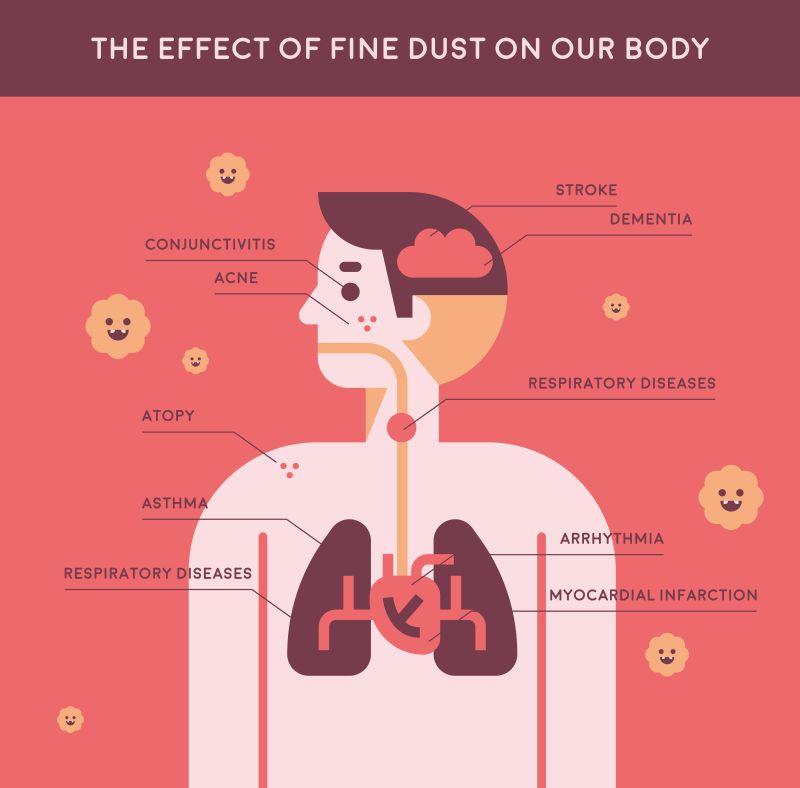Aluminum smelters are an essential part of the global aluminum supply chain, providing the raw materials needed for countless industries. However, there is a hidden health hazard that anyone working in or living near an aluminum smelter should be aware of: the dangers of alumina dust exposure, including aluminum dust health effects. The health effects of breathing alumina dust are significant, including respiratory and cardiovascular impacts, making it crucial to understand these risks to maintain a safe workplace and protect communities.
Health Effects of Breathing Alumina Dust
Alumina dust, particularly in its ultrafine form, poses serious health risks when inhaled. During smelting, grinding, or material handling, fine alumina particles can become airborne, and remain for long periods, which significantly increases the chance of aluminum dust inhalation, leading to severe health effects.
Inhaled alumina dust can penetrate deep into the lungs, bypassing the natural defense systems of the respiratory tract. The smallest particles are capable of reaching the alveoli—the tiny air sacs where oxygen exchange takes place. Once there, alumina dust can enter the bloodstream, leading to systemic health issues. Long-term exposure to aluminum dust has been linked to a range of health effects, including respiratory problems, decreased lung function, cardiovascular complications, and other aluminum dust health effects.

Aluminum Dust Hazards: Health Risks of Exposure
The health effects of alumina dust inhalation are particularly alarming for individuals who work in aluminum dust without proper protective measures. Repeated exposure to high concentrations of alumina dust can lead to several serious health problems, highlighting the hazards of aluminum dust inhalation:
- Respiratory Issues: Alumina dust can irritate the airways, causing symptoms such as coughing, wheezing, and shortness of breath. Long-term exposure may exacerbate existing conditions like asthma or chronic obstructive pulmonary disease (COPD).
- Decreased Lung Function: Prolonged exposure to aluminum dust has been shown to decrease overall lung function, affecting breathing capacity and causing long-term damage. Children, in particular, may experience impaired lung development when exposed to aluminum dust.
- Cardiovascular Complications: Studies suggest that breathing in aluminum dust over time may be linked to an increased risk of cardiovascular diseases, including heart attacks, strokes, and high blood pressure.
- Neurological Effects: Emerging evidence points to possible links between aluminum dust (from secondary processes such as machining or grinding) and neurological conditions or cognitive impairment.
Reducing the Health Hazards of Aluminum Dust Exposure
To mitigate the health effects of alumina and aluminum dust exposure, including the hazards of breathing aluminum dust, it is essential to implement effective dust management strategies. The aluminum industry has made significant progress in adopting dust control measures to protect both workers and the environment from aluminum dust hazards. Installing high-efficiency dust collection systems, such as electrostatic collectors or industrial-grade vacuums, helps reduce airborne dust concentrations, minimizing the risks of aluminum dust inhalation. Ensuring that dust collection systems are well-maintained and fully functional is key to minimizing risks.
Worker training also plays a critical role in reducing the hazards associated with aluminum dust. Workers need to be aware of the health risks of dust exposure and understand best practices for personal safety, such as wearing protective gear, following proper handling procedures, and maintaining cleanliness to minimize dust accumulation.

Protect Your Health from Alumina and Aluminum Dust Hazards: Learn More
Alumina dust poses serious health hazards in smelters, while aluminium dust mainly arises in secondary processes such as grinding and machining. With the right knowledge and measures, the risks of both can be significantly reduced.
Download our whitepaper today to gain access to in-depth information that will help you protect the health of your workers, maintain a safer environment, and ensure compliance with safety standards.
Download the white paper
Together, let’s propel the aluminum industry forward, paving the way for a future where innovation, sustainability, and progress go hand in hand. Download our white paper now and be part of the movement that shapes a brighter tomorrow.
